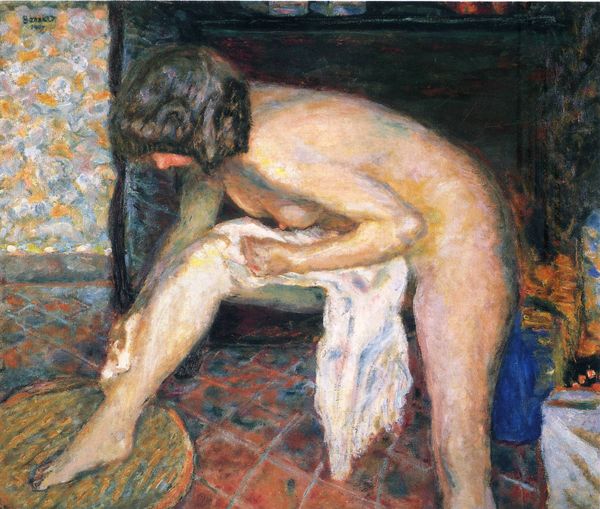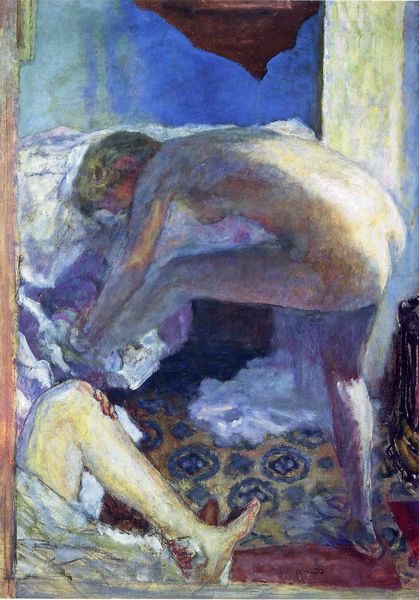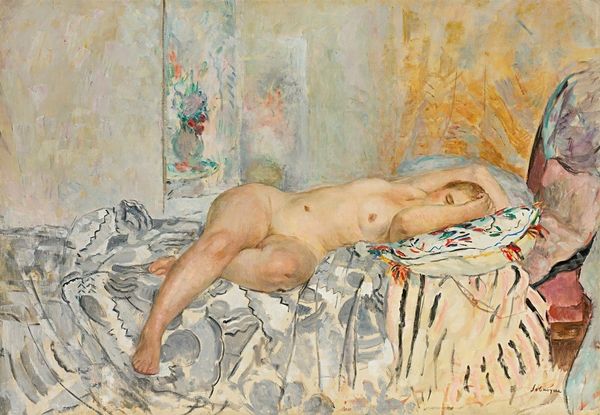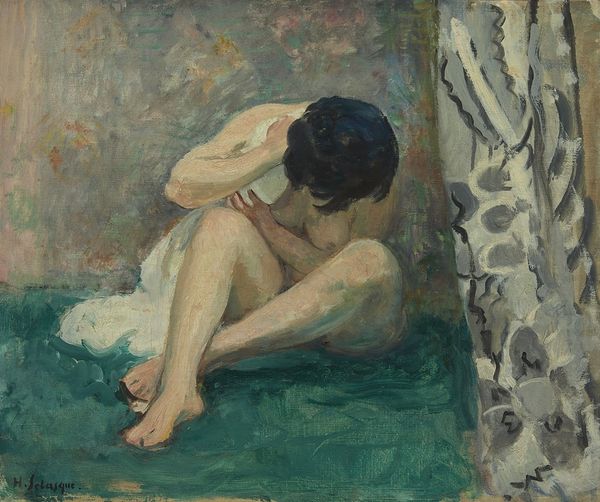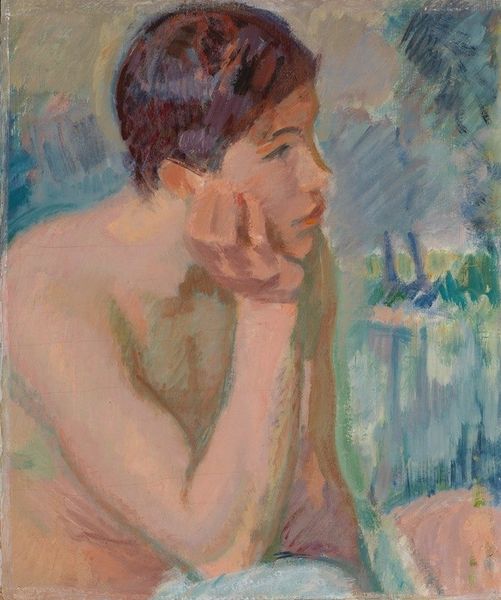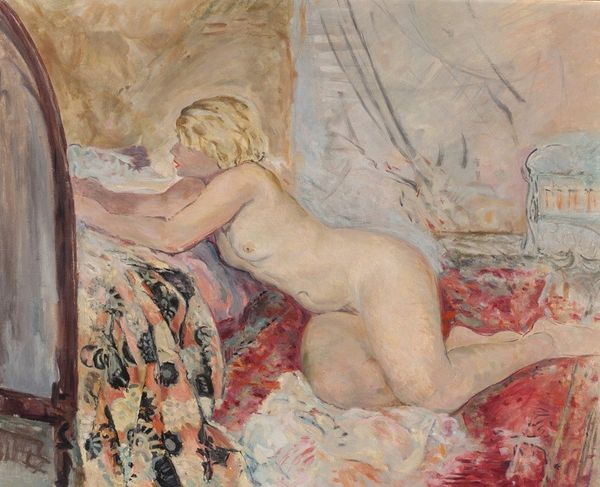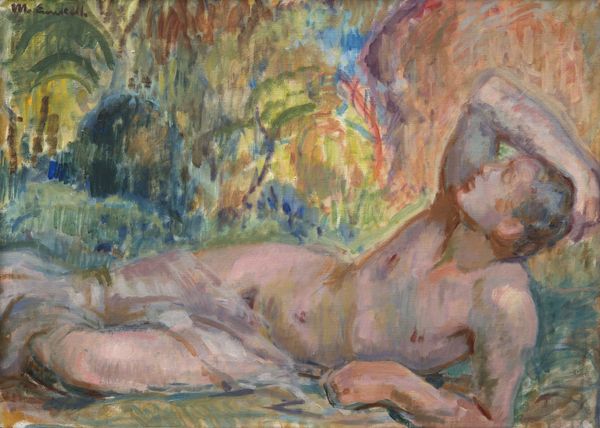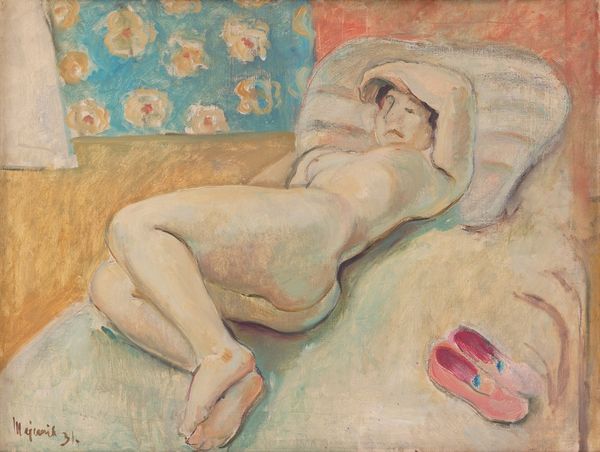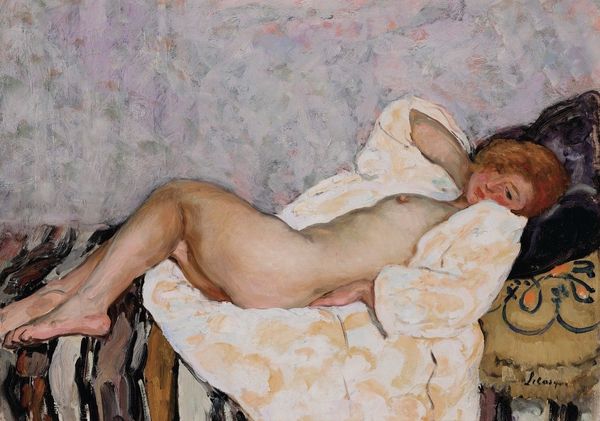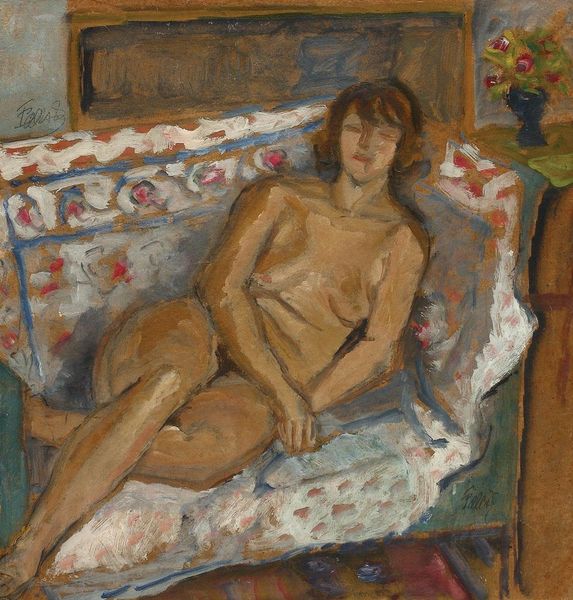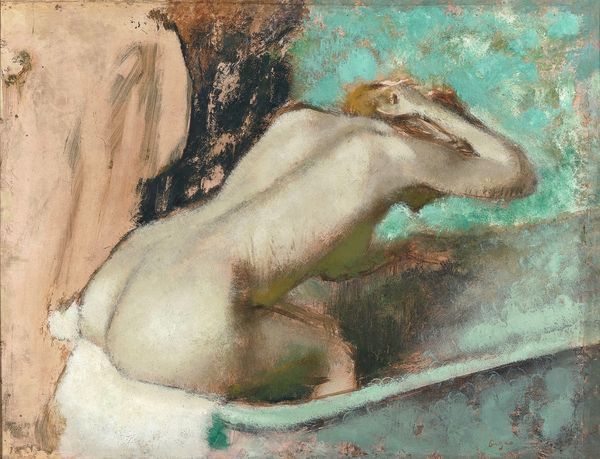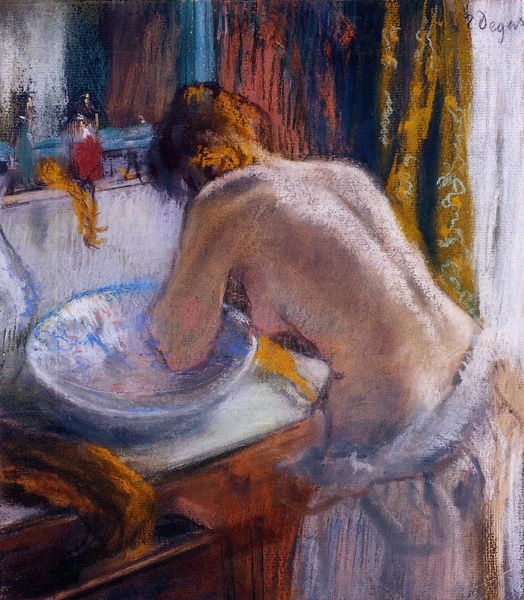
Copyright: Public Domain: Artvee
Editor: This is "Nu Assis Sur Un Canapé Près De La Fenêtre" by Henri Lebasque, painted around 1934-1935. It's an oil painting with soft colors and a domestic scene. I am struck by how grounded it feels. What's your perspective? Curator: Lebasque's "Nu Assis" prompts a discussion about artistic labor and its relation to domesticity. The means of production, oil on canvas, intersects with the depicted scene. Consider the availability of models, the price of materials, and Lebasque’s social circle as it is revealed in the interior details. This reflects middle-class leisure as the consumption of art increases. What do you think that says about the changing role of art in that time? Editor: I hadn't considered the domestic space itself as part of the production of the work! So the intimacy, the vulnerability… is it also about making the model and the setting into commodities? Curator: Exactly! And how Impressionism itself shifted modes of production in the art world, making artworks that responded to growing market interests with new technologies that helped art consumption become something easier to attain for growing economies. What might this say about class dynamics influencing Lebasque’s work? Editor: Wow, viewing it through that lens really changes my understanding. I thought it was simply a pretty nude, but there are layers here about the social conditions that allowed this work to be made. Curator: Indeed. By questioning the traditional definition of “art”, we get a better idea of both economic circumstances in that particular moment, and Lebasque’s position as a worker within it.
Comments
No comments
Be the first to comment and join the conversation on the ultimate creative platform.
